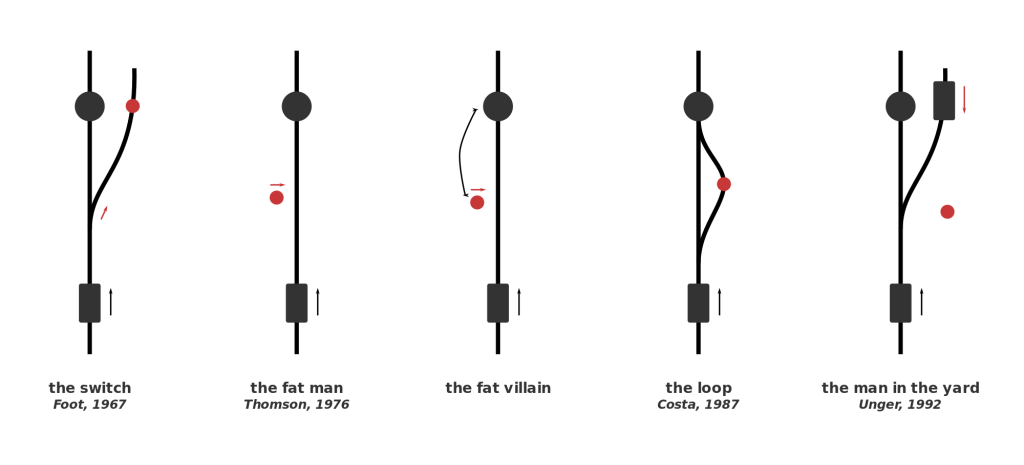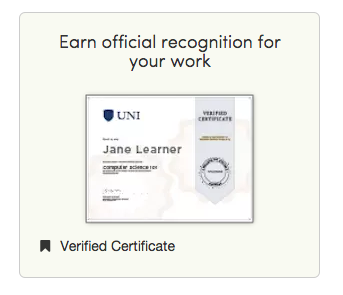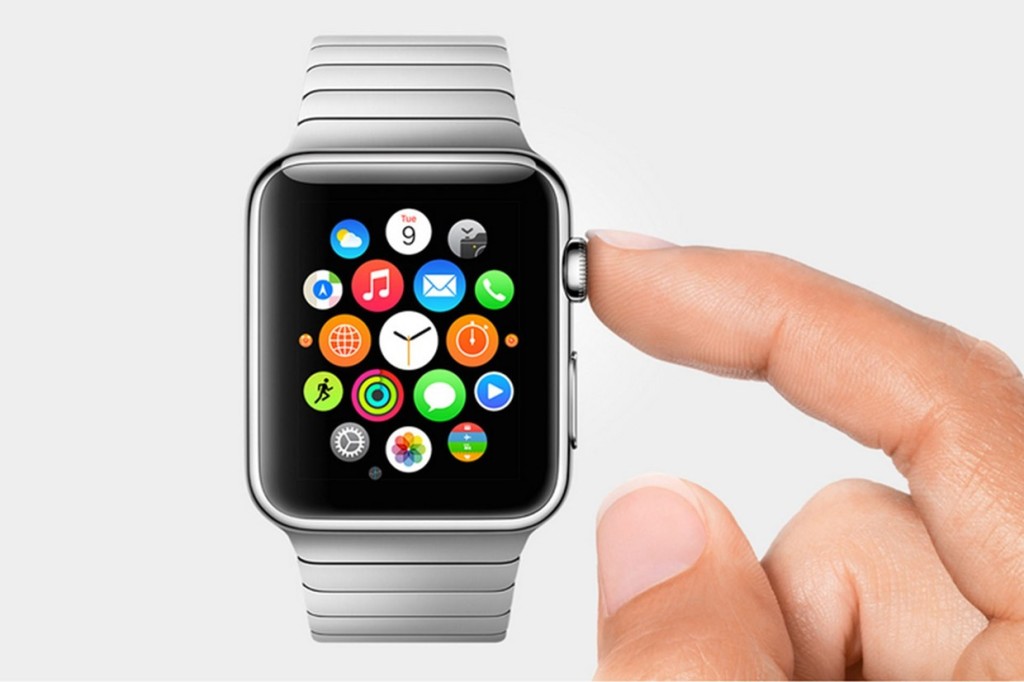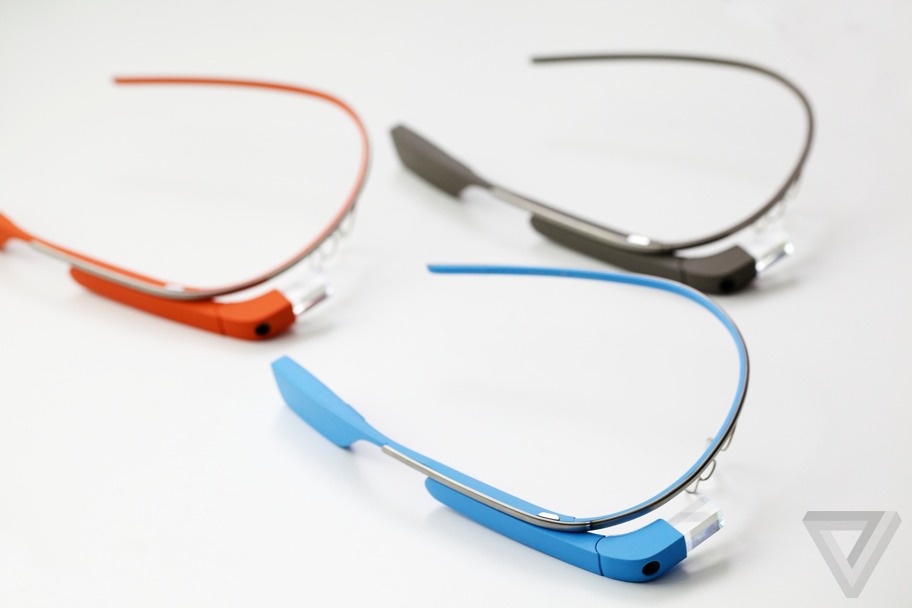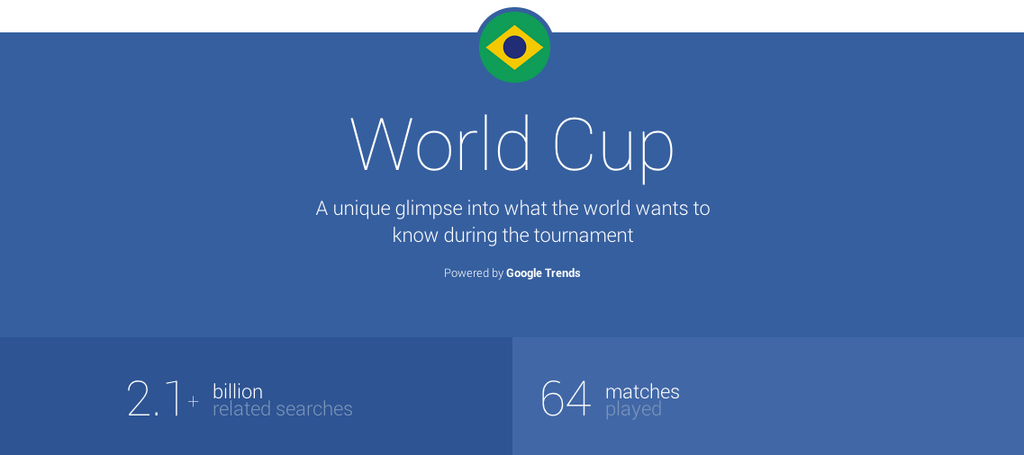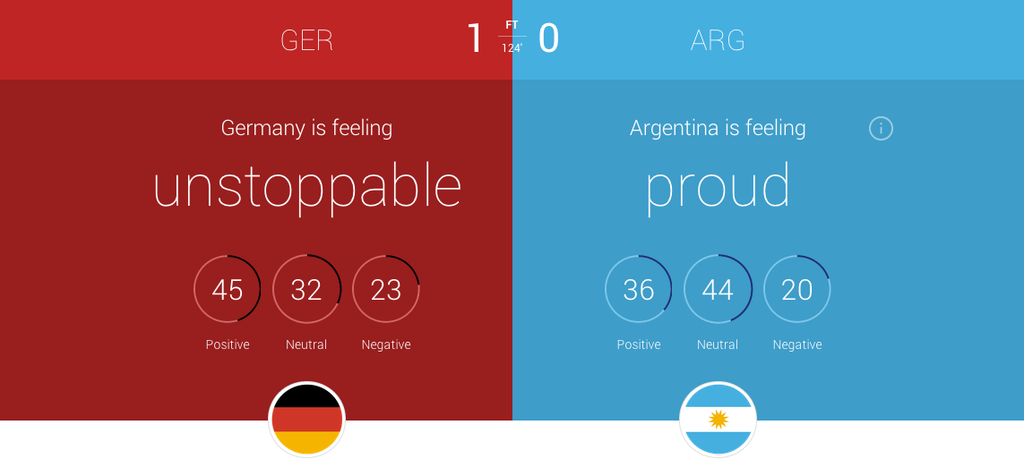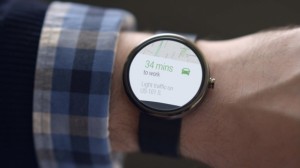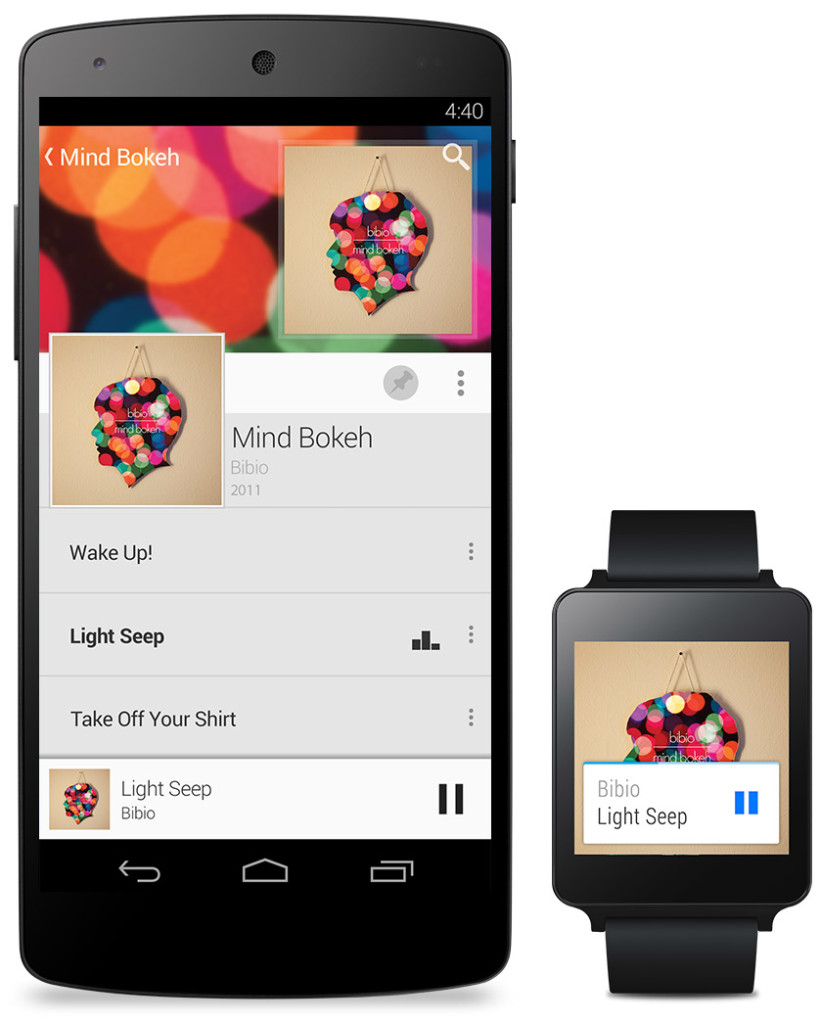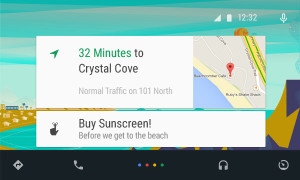-

-

-

-

-

-

-

-

-

-

-
-

-

-

-

-

-

-

-

-

-

-

-

-

-

-

-

-

-

-

-

-

-

-

-

-

-

-

-

-

-

-
-

-

-
 TOTW: Google's Project Ara Modular Phone May Be The Future Of SmartphonesOctober 30, 2014
TOTW: Google's Project Ara Modular Phone May Be The Future Of SmartphonesOctober 30, 2014 -

-

-

-

-

-

-

-

-

-

-

-

-

-

-
-
-

-

-

-

-

-

-

-

-

Posts tagged Google
The Monetization Conundrum Of Online Video
0With the possible exception of the Super Bowl, I’d bet it’s safe to say that nobody likes ads. Whether before a movie or video, in commercial breaks during television programs, or in the middle of your favorite podcast, nobody really enjoys being told to buy this product or use this service (often in a cringe-worth way) while they are enjoying their entertainment. Yet advertisements aren’t going away anytime soon; with the larger and larger audiences their ads are reaching, companies remain willing to allocate precious dollars to get their name out in every way they can. In the world of Internet publishing, ads have persisted as the staple of a creator’s income, despite significant shifts in the media landscape. But for online video, currently dominated by YouTube. advertisements have been a challenged revenue channel for creators hoping to earn a living.
I love YouTube and have a massive respect for the creators who have made it their full-time occupation to publish videos on the platform. These individuals spent an incredible amount of time and effort to become popular enough just to quit their day jobs and spend their time earning a living via YouTube. The sad part is that making a living on YouTube is harder than one might think. With popular YouTubers like PewDiePie making up to $7 million per year, it might be easy to regard YouTube as an easy path to fame and riches. But really, every YouTuber with even just 5,000 subscribers have put their heart and soul into their videos. As it is, money coming from ads just isn’t enough to allow YouTubers to start making videos full-time until they become very popular, a level which many never reach.
Let’s do the math. The average personal income in the United States is roughly $30,000. The current YouTube ad rate is a $2 CPM ($2 for every thousand views). To earn even the average U.S. income, a YouTuber creating weekly videos (a common schedule) would have to average nearly 300,000 viewers per video, an average usually only met by a YouTuber with around 2 million subscribers. (this varies from channel to channel) Of course, the rate at which you create videos is key in this calculation; if you make a video every day, the average view count drops to a more plausible 40,000. Compare that to the average CPM rate for TV, which is $19 (for an average 22-minute show). With that rate, you would only have to get 30,000 views per weekly video to reach the national average – much more sustainable.

Felix Kjellberg, aka PewDiePie, the most popular YouTuber on the platform. Last years, Felix sparked a small controversy when the public negatively reacted to his $7 million years income.
This isn’t just about YouTubers making more money because their media peers in television and film earn more. I’m not writing this out of pity for the struggling YouTubers who can’t earn a living wage yet are spending all their time trying to grow their audience. The reason the $2 CPM needs to be increased is because it simply isn’t enough to allow YouTubers to grow and make the great content we all want to watch. Take Olga Kay, a YouTuber with around 1 million subscribers across her five channels. In an article written in the New York Times, Olga talked about her hectic work schedule and about how “If we [her friends] were coming to YouTube today, it would be too hard. We couldn’t do it.”
Olga said in the article that she has made $100,000 to $130,000 every year for the last three years, which is a good income; yet she is still constantly stressed about finances, as much of that $100,000 goes straight back into her channels to pay for editors, equipment, etc. Let’s be honest: no one making twenty videos a week, almost three per day, especially with 1 million subscribers, should be that worried about finances.
This is the first part in Fast Forward’s two-part series on the YouTube’s advertisement and monetization conundrum. Stay tuned for the second article in the series over the next few days!
The Almost Impossible Ethical Dilemma Behind Autonomous Cars
08 years
You’re driving down the road in your Toyota Camry one morning on your way to work. You’ve been driving for 15 years now and pride yourself on the fact that you’ve never had a single accident. And you have to drive a lot, too; every morning you commute an hour up to San Francisco to your office. You pull into a two-lane street lined on both sides with suburban housing, and suddenly realize you took a wrong turn. You quickly look down at your smartphone, which is running Google Maps, to find a new route to the highway. When you look back up, you’re surprised to see a group of 5 people, 3 adults and 2 kids, have unknowingly walked into your path. By the time you or the group notice each other it’s too late to hit the break or for the pedestrians to run out of the way. Your only option to save the 5 people from being injured, or even killed, by your car is to swerve out of the way… right into the path of a woman walking her child in a stroller. You notice all of this in the half a second it takes you to close the distance between you and the group to only 3-4 yards.
You now have but milliseconds to decide what path to take. What do you do? But more to the point of this article, what would an autonomous car do?
That narrative is a variant of the classic situation known as the Trolley Problem. The Trolley Problem has many variations, some more famous than others, but all of them follow the same general storyline: you must choose between accidentally killing 5 people (e.g., hitting them with your car) or purposefully making an action (e.g., swerving out of the way) that kills one person. This type of situation is obviously one that no one wants to find themselves in, and is so unlikely that most people avoid it their entire life. But in the slim cases where this situation occurs, the split-second decision a human makes will vary from person to person and from situation to situation.
But no matter the outcome of the tragic event, if it does end up happening, the end result will be generally be the fault of a distracted driver. What will happen, though, when this decision is completely in the hands of an algorithm, as it will be when autonomous cars ubiquitously roam the streets years from now. Every new day autonomous cars become more and more something of the present rather than the future, and that leaves many worried. Driving has been ingrained in us for century, and for many, giving that control up to a computer will be frightening. This is despite the fact that in the years that autonomous cars have been on the roads, their safety record has been excellent, with only 14 accidents and no serious injuries. While 14 may seem like a lot, keep in mind that each and every incident was actually the result of human error by another car, many of which were the result of distracted driving.
I’d say that people are more worried about situations like the Trolley Problem, rather than the safety of the car itself, when driving in an autonomous car. Autonomous cars are just motorized vehicles driven by algorithms, or intricate math equations that can be written to make decisions. When an algorithm written to make a car change lanes and parallel park has to make almost ethically impossible decisions, choosing between just letting 5 people die or purposely killing 1 person, we can’t really predict what it would do. That’s why autonomous car makers can’t just let this problem go, and have to delve into the realm of philosophy and make an ethics setting in their algorithms.
This won’t be an easy task, and will require everyone, from the car makers to the customers, thinking about what split-second decision they would make, so they can then program the cars to do the same. This ethics setting would have to work in all situations; for instance, what would it do if instead of 5 people versus one person, it was a small child versus hitting an oncoming car? One suggested solution would be to have adjustable ethics setting, where the customer gets to choose whether they would put their own life over a child’s, or to kill one person over letting 5 people die, etc. This would redirect the blame back to the consumer, giving him or her control over such ethical choices. Still, that kind of a decision, which very well could determine fate of you and some random strangers, is one that nobody wants to make. I certainly couldn’t get out of bed and drive to work knowing that a decision I made could kill someone, and I’d bet I’m not alone on that one. In fact, people may even avoid purchasing an autonomous car with an adjustable ethics setting just because they don’t want to make that decision or live with the consequences.
So what do we do? Nobody seems to want to make kind of decisions, even though it is absolutely necessary. Jean-Francois Bonnefon, at the Toulouse School of Economics in France, and his colleagues conducted a study that may help us all with coming up with an acceptable ethics setting. Bonnefon’s logic was that people will be most happy with driving a car that has an ethics setting close to what they believed is a good setting, so he tried to gauge public opinion. By asking several hundred workers at Amazon’s Mechanical Turks artificial intelligence lab a series of questions regarding the Trolley Problem and autonomous cars, he came up with a general public opinion of the dilemma: minimize losses. In all circumstances, choose the option in which the least amount of people are injured or killed; a sort of utilitarian autonomous car, as Bunnefon describes it. But, with continued questioning, Bunnefon came to this conclusion:
“[Participants] were not as confident that autonomous vehicles would be programmed that way in reality—and for a good reason: they actually wished others to cruise in utilitarian autonomous vehicles, more than they wanted to buy utilitarian autonomous vehicles themselves.”
Essentially, people would like other people to drive these utilitarian cars, but less enthusiastic about driving one themselves. Logically, this is a sensible conclusion. We all know that we should make the right decision and sacrifice your life over that of someone younger, like a child, or a group of 3 or 4 people, but when it comes down to it only the bravest among us are willing to do so. While these scenarios are far and few between, the decisions made by the algorithm in that sliver or a second could be the difference between the death of an unlucky passenger or an even more unlucky passerby. This “ethics setting” dilemma is a problem that can’t just be delegated to the engineers at Tesla or Google or BMW; it has to be one that we all think about, and make a collective decision for that will hopefully make the future of transportation a little more morally bearable.
Why Other Companies Should Follow Alphabet’s Lead
09 years
For as long as it has existed, the public has identified the Google brand with the ridiculously popular search engine under the same name. Since 1998, Google search has grown exponentially while staying pretty much the same, yet the company Google has expanded aggressively into fields well beyond search, both through acquisitions such as YouTube and Nest, and organically via the company’s extensive R&D initiatives such as Google Glass and the company’s autonomous car. Still, this has all fallen under the good old multi-billion dollar umbrella of Google. That all changed last week. Not that initiatives inside Google have fundamentally changed; the profit driver continues to be search and advertising, with many long-term prospects hoping to flower eventually. Nevertheless, the restructuring of management lines arguably has dramatic long-term implications, in my opinion for the better.
In a nutshell, Google essentially created a holding company called Alphabet that owns Google and many smaller companies that Google has acquired/created, such as Nest and Calico (Google’s longevity initiative). Alphabet is now a portfolio of enterprises managed by founders Larry Page and Sergey Brin, many with distinct CEOs who have a fair amount of independence. This shift came as a shock to everyone outside of Google (and likely many inside the company), sounding more like one of the company’s classic April Fool’s jokes than a typical corporate maneuver. Renaming a company with one of the top business brands in the world? Insane in many respects, not to mention handing the CEO of “Google Classic” to another executive, Sundar Pichai.
So why is this a good idea, and why should other companies consider following Google’s lead? It really comes down to what they are trying to accomplish as a company. In the announcement letter that you can read at abc.xyz, they wrote the following, which helps explain their reasoning behind the change:
“As Sergey and I wrote in the original founders letter 11 years ago, ‘Google is not a conventional company. We do not intend to become one.’
Alphabet’s initiatives are far-flung and have the potential much more than Google’s traditional “cash cow” businesses to change the world. It’s hard not to see some of Alphabet’s initiatives becoming wildly successful and ultimately spinning out into independent, and large, public companies. For instance, I previously mentioned Calico as one of the companies Alphabet is keeping under it’s wing. Calico is a scientific research and technology company; their ambitious goal is to research and eventually create ways to elongate life and let people live healthier. That is a goal, although ambitious, if reached with the help of Alphabet could very well change the world in a major way.
What really excites me about Alphabet is that they’re doing precisely what I would do with all that money and resources: create and finance projects that will change the future. Google the search engine has become a very conventional business in the Internet age, but Google the company aspires to much more that just rolling in the cash and adding its existing product lines (I hate to say it, but I’m looking at you, Apple). In an age of tech titans, companies such as Google, Facebook, Amazon, Apple, and Microsoft are all angling to stake their claim to the future. And under Alphabet, Google aims to establish a leading innovation platform by “letting many flowers bloom.” Rather than sticking to a couple odd ventures and mainly staying a conventional company, Alphabet lets Google expand into a business set on creating a better future. And if this change in corporate structure will help facilitate that, then I say go for it.
If you want to read the original Alphabet announcement letter, click HERE.
Coursera Partnering With Instagram, Google and More
09 years
College has always pretty much been the only way to start a career in our modern world. However well you do without a good college degree, “I went to Stanford.” will always leave a lasting impression on whoever you’re talking to. But, as online classes and resources continue to branch out, creating more content and ways to access them, the credibility of these classes continue to increase. Coursera, an online college level course distributor, already has a pretty good system running. There are hundreds and hundreds of courses on the site, only a handful on demand, most with scheduled class times spread throughout a period of time, curated by many different universities all over the world in tons of different languages. If you complete these courses, you can earn a verified certificate of completion, signed by the instructor from the university. Although the certificate can’t actually be used as credits, they are a good show of prior learning when applying, or just used as proof that you completed the course.
Coursera is now taking this “verified certificate” thing to the next level. They have already introduced a feature called Specializations, which are a group of courses under a certain topic. Once you have completed these courses, you have to complete something called a “Capstone Project”. A capstone project is, well, a project to show that you’ve learned the material. After completing the capstone project, it will be reviewed, and you may be awarded with a certificate of specialization completion.
Obviously, Specialization Completion is worth a lot more than just completing one of the courses, because it has you use your new knowledge. But also, Coursera has recently partnered with a couple tech companies, including Google, Swiftkey, Instagram, Shazam and others to help with the credibility of these Specialization Courses. When you complete the capstone project, depending on the specialization you took, your project will be reviewed by one of these companies, and the best of the course’s participants may be given some reward by the company itself. For instance, Google looked over all the capstone projects in the Mobile Cloud Computing specialization, and featured the winner’s apps in the Play store, as well as giving them free Nexus tablets.
So far, these partnerships have been restricted to specializations to do with technology and entrepreneurship, but Coursera says they expect to branch out in the future to other topics as the specialization courses grow.
This opportunity, for your work to be shown to many new companies is a great for many people in college, not yet in college, or later in their career to try to move into a job they like better. Whatever the reason, Coursera is creating this great opportunity for learners of all kind, and you should definitely check out their courses, whether for college or just for fun. Also, this partnership is one step in the right direction from the Internet being known as “that place with cat videos” to a reliable, verified learning reasorce. Since is Google, Shazam, and many other of the biggest tech companies trust them, why shouldn’t you?
What To Expect In 2015 For Wearables
09 years
2014 finished with a bang, at least if you call USA and North Korea bickering over a Seth Rogen satire movie a bang. Besides that, 2014 was a year of smartwatches, bigger phones, and flat design at its finest. The new line of iPhones was released, with the iPhone 6 and 6 Plus making headlines for their giant size (by Apple’s standards). iOS 8 was released on September 17th, and Android even hopped on the software wave when they announced Android Lollipop at their recent Google I/O conference. The internet suffered many different hacks, leaks and viruses starting with Heartbleed and the NSA leak, and finishing with the Sony Playstation and Xbox hacks. And offsetting the ever-growing smartphone size, smaller smartwatches are starting to take off in popularity, with Android Wear OS released alongside many new Android smartwatches from a variety of manufacturers.
The Smartwatches Of 2015
And that leads me to the biggest smartwatch announcement: Apple Watch. Last year I said Apple Watch would be a big highlight for this year, and it was. Well, at least the announcement was. Set to be designed in three styles, Apple Watch Sport, Apple Watch, and Apple Watch Edition, the Apple Watch wasn’t actually released, despite all the press and hype even from a year back. The only promise Apple gave us was a public release of “Early 2015”, which promises to be a big event whenever it happens. As great as the release of the smartwatch will be, the first time Apple will be branching into a new vertical since Steve Jobs’ death, there will be some unavoidable consequences. For instance, there have been many smaller smartwatches makers, most prominently the “Kickstarted” Pebble, along Samsung and the Android gang’s watches. Some of the less well-funded makers will likely need to sell or potentially go out of business.
The fact is that consumers tend to favor sticking with their native tech ecosystem, , just as the product companies desire. It’s just easier. But also, with so much more money and development resources, Apple is hard to beat in terms of quality of hardware and software. It’s a little sad, as some of these startups and smaller watches were actually not that bad, but will still likely fall prey to Apple’s enormity.
More Wearables
So far in the progression of wearables, smartwatches have been the only successful niche. Smart glasses, such as Google Glass, were a lot like the segway. There was a lot of hype, but no actual use in daily life. For instance, Google Glass was a highlight of Google’s I/O conference, a special restricted public testing called the Explorer Program. With the I/O announcement, and the Explorer Program, the excitement level was high for the public release in the beginning of 2014. Unfortunately, when the public release did come, nothing really happened. Partly, this was because of all the controversy of Glass’ pretty much secret filming capability, leading to it being banned in many places. But also, the whole concept was to make a device that can seamlessly let you access the internet without pulling out your phone, but the execution of that idea lacked. First of all, the glasses looked geeky. I can’t lie, when you wear something like that you’re kind of throwing your style out the window for technology. Also, the main control of the device is speaking, which doesn’t really work when in public, not because of the sound quality, but because you just look weird talking to no one, while staring blankly into space.
So, what comes next? As I’ve argued, smartwatches will become big whether the product is significantly useful out of the gate or not. As the line of products grows, just as it did with iPhones way back when, their usefulness and quality will increase dramatically. The key to a successful wearable is that it’s both novel and useful. Most wearables that have failed to succeed lost their battles because they weren’t useful enough, such as (most notably) Google Glass, some Kickstarter gadgets, and early smartwatches. Many concepts simply didn’t have enough features and interaction with the outside world to make a dent in our daily lives. So it’s pretty hard to predict exactly what type of wearable will find the most success this year, though CES featured a few “out of the box” products that start to hint at what types of products might come out of blue in 2015: for example, mind reading.
Mind Reading
Ok, ok, maybe not exactly mind reading, but products like Thync, a small device you wear on your head that changes your mood using electrical pulses, and Mellow Mind, another headpiece that measures your state of relaxation and with music teaches you to relax, hint at a new branch of technologies working to understand, read, and even manipulate your mind. However whimsical, the popular neural-controlled cat-eared Necomimi may show a direction that consumer and lifestyle products are headed. As much of human existence has been focused on interacting with the world through our fingers, direct interaction via the brain is quite exciting. Not just for consumers, to see what will be made from them to use and marvel over, but also for entrepreneurs, companies and scientists, as a world of possibilities opens up. We often see technologies interacting with brains in sci-fi, whether it’s operating your home, high-tech simulated worlds, or much more, it really is amazing that we are already staring to go in that direction with CES 2015. As scientists and engineers become more adept in their understanding of direct interaction via neurons and electrical pulses, we will hopefully reach a stage where all this practical interaction with technology will be possible, and sci-fi will become real once again.
TOTW: Google’s Project Ara Modular Phone May Be The Future Of Smartphones
010 years
Behind Google’s expansive teams working on more open projects like their engine, Google Shopping Express and more, there are more teams, still big and including lots of people, just not as publicly known. Many of these projects come from Google X, Google’s top secret labs working to find creative and unexpected ways to fix our modern world’s problems. On of these projects that was released as a concept was Project Loon, a project bent on giving everyone is the world good cell connection using hot air balloons. Crazy, I know, but if anyone could find a way to achieve that it would be the teams at Google X. Another one of the these projects is Project Ara, a modular phone that Google is working on with Phonebloks and Motorola, which of course is now part of their own company.
Project Ara has been going on for a while now, and is about to launch into phase 2 prototypes. The basic concept of this “modular phone” idea is that you can interchangeably take new features like a camera, an extra storage block, a big speaker, and more and switch them in and out with the blocks you already have in your phone. If you take all the block out of the Ara phone, there will be the basic block hull, on which you slide in all your chosen blocks in certain positions. That way, you never really have to throw out your phone. If a better screen is developed, buy the new screen and take out your old one. If you want more storage, just buy a bigger storage block. If you want more battery, buy a bigger battery block.
This won’t leave out third-parties, though, as they could make their own blocks such as flashlights, a card holder, whatever you could think of. The companies literally get to make a part of the consumers phones, which doesn’t usually get to happen, unless of course you work for Apple, Samsung, etc.
Also, the phone’s design will be a lot more customizable than most phones, as each of the individual blocks will be available in a couple different colors and patterns. And while I’m on the topic of customizability, Project Ara is definitely the most customizable phone made yet. Not only can you get the apps you want, but you can get whatever feature fits you. As I said before, this phone, if enough blocks are designed, could be the perfect phone for everyone.
Sure, Ara may never have the same feel and smoothness as Apple products, or the number of features as Android phones, but it will be targeting an audience completely different: the people who use their phone in pretty much one or two ways, maybe relating to their job, and want it to be optimized for that reason. But, for Project Ara to actually compete in the smartphone industry, they will have to get a lot right; the feel of the phone in your hand, the quality of the blocks, the amount of third party devs they get into the project, the processing speed, the amount of blocks they make, the list goes on and on. But if they do get it right, Project Ara could be a new big competitor in the smartphone market.
Just a update on Project Ara, the Prototype 1 is finished, which successfully launched Android in a recent video uploaded(below). The next prototype is now in production.
AOTW: Wolfram Alpha’s Capabilities Will Blow Your Mind
010 years
There is really no words to describe Wolfram Alpha. In essence, it’s all everybody thought the internet would be capable of back when it was first invented. It can do many practical things, and many stupid but entertaining things. Just what people are looking for. The app started as a site/app called Mathematica, which specified on math problems only. But, over time the functionaries and abilities of this wonder app grew and grew, until it covered everything from stocks, to TV stations, to astronomy, to sports teams, to celebrities. It is very possibly one of the most useful sites on the web. Wether you know it or not, you could definitely get good use of Wolfram Alpha.

Wolfram is essentially a search engine. Well, a super boosted search engine of awesomeness. Of course, it doesn’t act as a literal search engine, since it can’t actually go on web pages, but it’s main function is as a type of search website. The whole app is based off of a search bar, in which you type in your inquiry. The ingenious algorithms of the program takes apart your writing in a way it can understand, and then inputs that to its database. For instance, if you write, “What’s the distance to Saturn?”, it will show you the interpreted input, which is:
So in this case, it worked just fine. It shows you that the distance is 10.8 astronomical units, 1.004 billion miles, and the orbit around the sun is about 29 of our years. Along with that info, it shows us some completely useless information, but only useless because it’s to technical and complex for me to understand. In every question you ask, Wolfram Alpha tells you the answer, in amazing detail.
Like, a super incredible amount of detail. As an example, if you write “Google like curve”, it will show you this:
Yes, you’re right. That’s a mathematical curve chart made to look like the Google logo. Ok, that’s cool. But that’s not all it does. It also gives you the exact mathematical equation used to get the curve. In the Google logo’s case, here is a small part of the equation:
I mean, holy cow! That’s actual math! And that’s only about a fifth of the whole equation. It can do this type of thing for most object, logo or person it has a picture of in it’s database. Not to mention it only took it about, maybe, 1 second. This only starts to demonstrate the immense power of this engine. There are a couple drawbacks.
When Stephen Wolfram, the creator of Wolfram Alpha, was creating his engine, he probably wasn’t focusing to much on user experience. I’m not saying the design of the site is bad. It’s fairly easy to navigate, especially on the web version. But, the search engine itself could use a little, well, Apple-ifying. Made simpler and easier to use. Meaning, you can’t always depend on the engine upstanding you when you write in regular english. A long sentence with lots of conjunction words like or other unnecessary words like “and”, “that” and “what’s” all just confuse the system. There is an incredible amount of things and computations this engine can do. It will really blow your mind. But, in the times when you do think it could be helpful in average life, there’s a good chance you don’t know how to communicate to the engine what you want it to do.
Overall, Wolfram Alpha is a outstanding website and app. Along with silly computations, as I mentioned before, the program can do many types of calculations that will help you in everyday life. No matter what your job is, there is probably a way Wolfram can help you. And if you doubt the gigantic amount of abilities Wolfram has, on the app there is an “Examples” bar, in which it has many different categories of professions, topics and more. In each category, many examples are listed of what Wolfram can do. You have to admit, the software is amazing. Wether or not it is useable on a daily basis, well, probably not, but it is helpful occasionally and is certainly fun to play around with.
TOTW: Google Eases Pain Off Brazilian Soccer Fans On Google Trends Site
010 years
As part of Google’s delve into the World Cup 2014, (by the way, congrats Germany!) they added onto their current platform, Google Trends. The Trends website allows the user to look up the popularity of a search term, see the current most searched terms, and more. For the WC, Google added a slick, flat designed page all about the statistics behind World Cup searches. For instance, for each game, certain statistics are shown, including the most searched player, the overall mood of each team, most searched team and more. On the homepage, interesting facts about World Cup were shown, such as searches spiked 34x in the Netherlands to see if Ron Vlaar’s penalty really did spin back over the line when nobody was paying attention. I highly recommend going to the site, as it is very interesting.
But, if you are a Brazilian fan, you probably don’t want any more to do with the World Cup after the unfortunately embarassing 7-1 loss to Germany. In fact, the searches for the World Cup in Brazil are already focused toward the 2018 World Cup, shutting the loss behind them. Luckily, Google has you covered, Brazilian fans. Google revealed to NPR that, when putting stats on the website, they screened for to negative things searched in Brazil. Some of the things searched were just to negative, such as “shame”, so Google left it out of their experimental website. It’s not as if Google is downplaying the bad news, as they put the Brazilian attitude after the 7-1 game as “heartbroken”, but more highlighting the good and interesting facts. They released an official statement:
“Our social channels exist to share interesting and relevant information to the people who want to hear from us. Unlike your average 16-year-old, we don’t share every single thing we might have to say. Throughout the World Cup, we’ve shared more than 150 tidbits in 13 languages looking at Leaping Legends to Waving the Flag and everything in between. If people want more, they can always use google.com/trends to see what topics are trending at that time. Our primary goal, more than anything else, is to share what matters most at that moment to the most people. And, it’s good to have that goal, as we don’t want to have to rely on penalty kicks.”
Google’s attempt to ease the pain of Brazilian fans is surely considerate and thoughtful. Unfortunately, there isn’t much Google can do. That day will live in infamy in Brazilian hearts forever, not going to be stopped by the lack of some facts on their Trends site. The wound is too deep. Still, it is nice to know that the people running Google aren’t heartless, and care about the millions of Brazilian citizens. On a more cheerful note, Google didn’t try to downplay Germany’s attitude about winning, stating their emotions as “unstoppable” for a couple games in a row leading up to the Final. So again, congrats Germany, and we’ll just have to wait another 4 years for the same amount of global attention and action.
TOTW: Complete Review Of The Google I/O Keynote 2014
010 years
Alongside Apple, Google’s Android is one of the biggest smartphone operating systems out there. Millions of people have their phones running Google’s software, so when the Google I/O comes around every year, in which the announce all the new features and updates to the software they have spent the last year on, the whole Android world of developers and consumers blows up. Recently, this year’s Google I/O Keynote went on, and what they released blew away the whole world.
Android L
At this year’s Google I/O, they released Android L for developer preview, the latest version of Android. Android L is a complete change to the usual Android releases. This year, Google went for style, something they haven’t done as much in the past. In the recent bubble of flat design, mostly starting with iOS 7, Android L fed off that popularity, but also brought something of their own to the release. And they called it Material Design.
Basically, Material Design is a style of design where you take the normal elements of an app, turn them into flat and vibrantly colored basic shapes, and animate them in a way that seems realistic and plausible. First of all, in the keynote they stressed the importance of their new design element, elevation. Instead of a completely flat design, they added elevation and shadow into the mix, creating some sort of iOS 7/iOS 6 mashup. Developers can now layer design elements in their apps, and the software will automatically add the correct shadowing from an invisible digital light source.
Another element of Material Design is the animations. Again, smooth animations have been a trend in technology recently, mostly in websites. Android L incorporates these animations smoothly, relying on the user to initiate them. For instance, the opening of a sidebar, touching of a menu bar, or other actions the user could make all are executed using animations. The animations integrated into L are, as said in the keynote, were inspired by ink and paper. All the animations should look possible, something that could happen in real life. Not just a button suddenly disappearing reappearing on the other side of the screen.
Also, the bold and bright color scheme really enhances the flat part of the design. The design leaves no white spaces that aren’t inhabited by either text, bold colors or imagery. As a mainly Apple user myself, this new design brings a whole new level to the Android line, and give me a lot more respect for the effort put behind not only the hardware and specs, but also the design.
But, don’t forget that Android L has pretty much no other big addition or change to the previous Android releases, so in a way the update was slightly disappointing.
Android Wear
Basically an extension of Android L to the already made Android powered third-party smart-watches, Android Wear is the new software that Google has made for the new category of their products, Wearables, that was released at the Google I/O. Their software is meant to give you information useful to you at the time, and reduce the time spent pulling out your phone constantly every time it vibrates. What you are currently doing or where you are will trigger what information will be displayed on the device.
The basic design of the Android Wear OS is pretty much Google Now on a watch. The main screen is your choice of watch background, with a Google Now card underneath that has to do with your current situation, such as your plane flight info, the current traffic for your commute, etc. If you swipe down, you can flip through different cards such as text messages, emails, maps for the current situation, and other notifications from apps on your phone and a few available on your watch itself. Third-party apps will be available to make, because of the Android Wear SDK that was released at the Keynote.
The Android Wear is heavily connected to your Android phone. It’s far from a stand alone device. All the notification cards you get you get directly from your phone, and when you swipe to get rid of a card, the card instantly disappears on your phone as well. You can not reply to emails or texts, or let alone answer calls directly on your watch. You can only get a notification, and reject or take the call or email.
Even if you don’t have an Android phone, the Android Wear software could be useful. (at least until Apple release the iWatch) For instance, Google’s great voice search is integrated into the watches seamlessly, with Google’s “Ok Google” catchphrase activating it. You can set reminders, both timely and location wise, make use of third-party apps, such as Eat24, which allows you to order food easily through an app, and more. Still, the capabilities of the software is definitely decreased if you don’t have an Android phone, and I would just wait for the iWatch later this year or early next. But, if you do have an Android, it is great and very useful. There are many different companies making watches that run on Android Wear, with designs ranging from square Samsung Gear live to my personal favorite circular Moto 360 by Motorola. There is something for everyone.
Android Auto
Android Auto is Google first confirmed delve into software for automobiles, besides for their autonomous cars. What Android Auto actually is allows you to plug your Android phone into certain Android Auto partnered cars, and a Android OS specially made for cars will transfer to the car’s screen. The reason that the Android Auto need to have to phone connected is that the OS relies on the phone to personalize much of its key features, such as messaging, and music.
Which, coincidentally, is two out of three of Android Auto’s 3 key focuses: Music, Communication, and Maps. The three things that people use their phone while driving for, something Google would like to stop.
The main screen of Android Auto is not surprising. You guessed it, some Google Now cards containing relevent info such as recommended driving locations for you at the time, music that you recently played from your Google Play Music account, and more. Underneath the cards is a menu bar, fully designed to L standards, that allows you to get to and from the 3 key focuses.
Another of Google’s great features that seamlessly fits into Android Auto is their great voice search. Not only can you control all the features, you can ask the voice search many other things, including closing times of businesses, the feature they used during the demo at the keynote. Google Maps is fully voice controlled, so no more fumbling with the arduous task of typing on the car’s not very responsive screen.
Also, an SDK for Android Auto was released, opening up your car to many different possibilities for other third-party apps.
Smaller announcements
Chromebooks
As was Apple’s WWDC this year, the Google I/O’s keynote was all about software. No hardware was released, but the design elements in L was implemented in all platforms. This was the main change (and only big change) to the Chrome OS. In the bottom left corner of the screen, the Android-wide Google Now cards will also show up, in the same was as on a phone or smartwatch. All the notifications are again linked to your phone, except of course for web apps like Gmail and more.
Google Fit
Google Fit is far from a big addition, but I thought I wold mention it anyway. Not to accuse Google of anything, but Google Fit is incredibly similar to Apple’s Health app. It is a way for apps, with the user’s permission, take information from many different health and fitness apps and products and implement it into their app.
Google Play Games
Google Play Games was updated, of course with the new L look, but also with a couple new features. You now have a “Game Profile”, which displays your games, high scores, and achievements is an easy to read fashion. The Quests feature was added, where you can make a goal to gain this many coins or collect this item and so on by a certain date. An SDK was even released so developers can put this into their game, giving the player rewards for quests completed. Finally, a bookmark feature was added so the user can flip through the exact level or stage of a game they are on for each game, accompanied by a screenshot of the game when the user was playing.
Overview
Everything Google released at the Google I/O 2014 keynote pointed to one thing: their goal to open up their software to every platform possible. From cars to watches, Google is pushing Android onto every possible piece of technology. Their release of L is promising, showing that they do car about the aesthetics of their software as much as the expansive amount of features. Android Wear is currently the best smartwatch OS out there, showing off their Google Now cards to their full potential, a feature that Google has decided to cram into everyone’s faces on every screen. I’m not saying that’s bad, since the Google Now card’s contextualize can be very useful, especially on platforms such as the smartwatches that are trying to reduce your time spent on the device.
Android Auto is a interesting delve, and certainly could make the car ride an easier adventure, especially with the introduction of the voice search. The keynote itself was fine, but it could have been better. For instance, I’m know that I’m not the only one who noticed that the people speaking were not the heads of the company, but vice presidents of certain subcategories, and Sergey Brin never made an appearance. This may have affected the presentation a bit, but the demos were fine and illustrated how the software could be used well. The software introduced was great, surely sending developers into a frenzy, and all the Android users everywhere counting down the days until next fall, when all the Android software will be released to the public.



